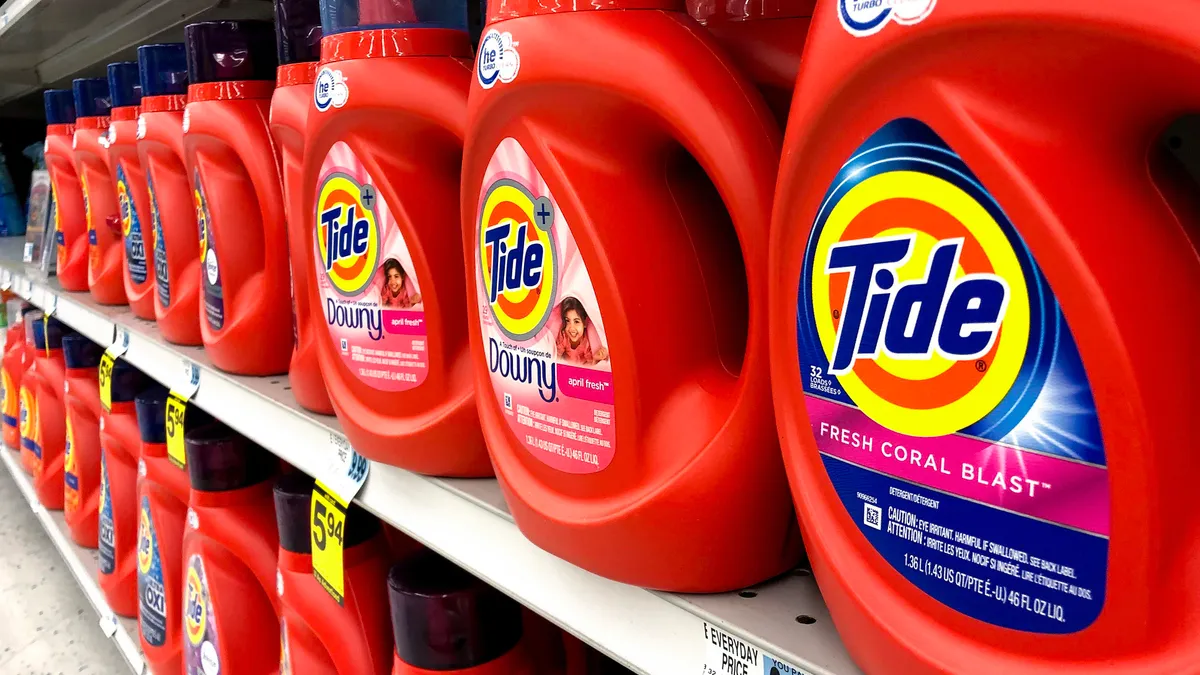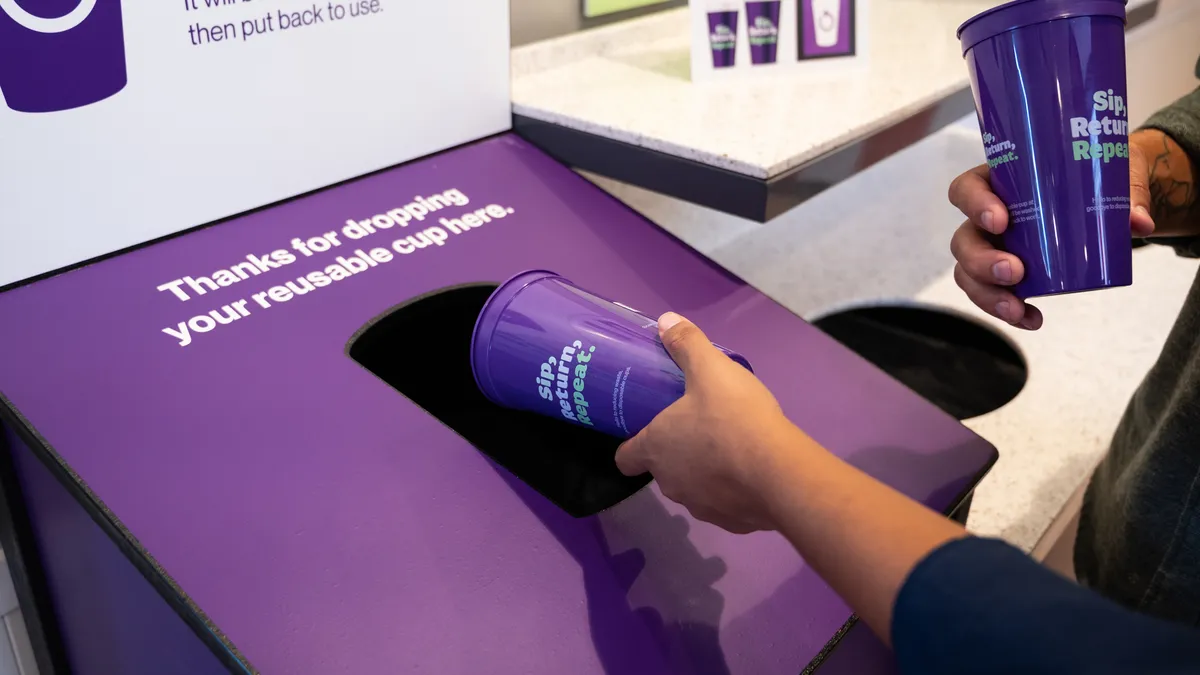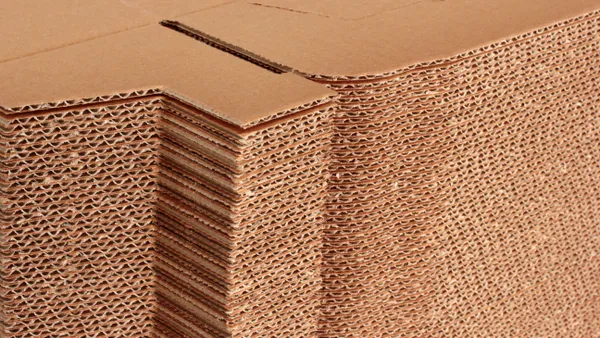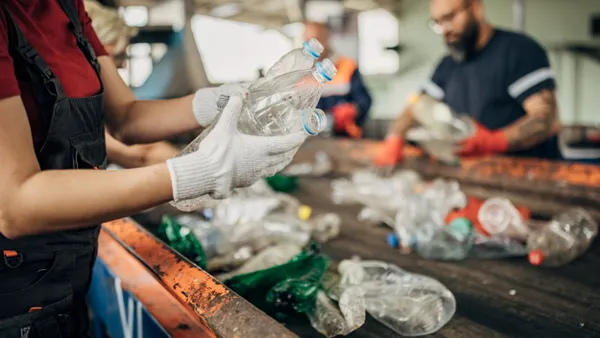Dive Brief:
- Dow and Procter & Gamble are jointly developing a dissolution technology for transforming rigid, flexible and multilayer plastic packaging into recycled polyethylene that P&G can use in its packaging.
- Polyethylene is amenable to a variety of recycling technologies, said Dave Parrillo, vice president for research and development for Dow Packaging & Specialty Plastics and Hydrocarbons. But he believes “there is no one solution that will bring us forward; there's no panacea or magic bullet ... we’ll have to have a variety of technologies even to close the loop on something like polyethylene alone.”
- The effort is in its early stages, and the companies ultimately intend to commercialize the technology. They have not shared a specific timeline.
Dive Insight:
Parrillo explained that, in its basic form, this dissolution process entails taking plastic-based consumer household waste, dissolving it in a solvent and separating out impurities like other types of plastic, additives or pigments.
“Then we're taking that solvent and we're stripping off the polymer of interest, in this particular case polyethylene, in the purest form that we can get it for recycling, and putting it back into articles like consumer goods. And then we're taking the solvent and recycling that solvent and performing the process over and over again,” Parrillo said.
The intent is for the resulting material to have “near-virgin quality and a low greenhouse gas emissions footprint,” according to the announcement.
This is not advanced, or chemical, recycling, Parrillo said. “Advanced recycling, in our view, is when you're physically breaking bonds in a product” — pyrolysis being one example. “This is probably closer to mechanical recycling, I would say, than it is to advanced recycling, in the sense that you don't break the bonds in the product. The polymer remains in the state that it's in,” Parillo said. The purification process is less energy intensive, Parrillo said.
The process allows for closing the loop “rather than downcycling the product ... the finished product is in as best of a virgin state as you can get it in,” he said.
In the future, dissolution technology has the potential for food-grade application, according to Parrillo, which he said is a key opportunity to increase the amount of recycled plastic in use.
The partnership aligns with Dow’s goal to “commercialize three million metric tons of circular and renewable solutions by 2030,” the company said in its release. Likewise, P&G aims for all of its consumer packaging to be designed for recycling or reuse by 2030; it is 79% of the way there.
Dow has invested in other recycling technologies, including a 2022 commitment with Mura Technology to build facilities in the U.S. and Europe that would add up to 600 kilotons of advanced recycling capacity by 2030.
P&G, whose brands include Tide, Gain, Bounty, Dawn, Old Spice and others, has also recently been involved in trying to improve HDPE recycling through the HolyGrail initiative.















